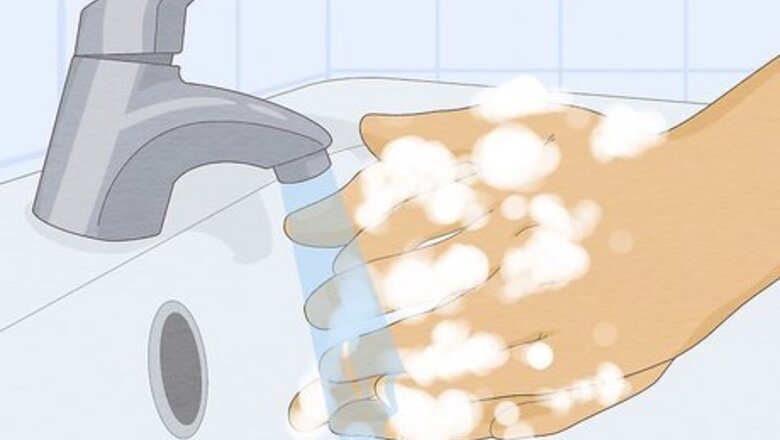
views
Switching Out a Barbell
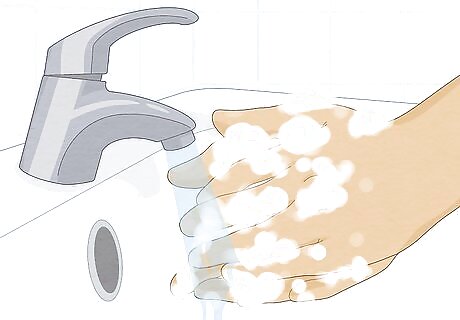
Wash your hands. Your hands should be clean to handle a piercing, even after it heals. Wash your hands with clean water and antibacterial soap. Dry your hands well afterwards – dry hands allow you to gain a better grip so that the piercing doesn't slip out of your fingers.
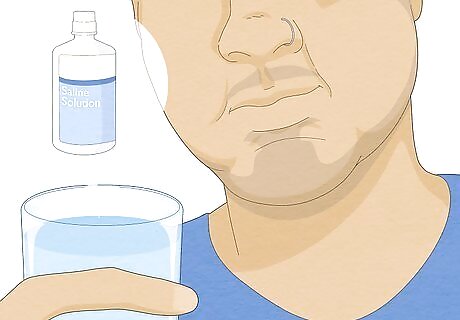
Rinse your mouth. Rinse your mouth with a saline solution – use a mixture of warm water and salt (warm water will dissolve salt better than cold water). You can also use an anti-bacterial mouthwash, if your piercing is healed.

Position yourself in front of a large mirror to help guide you. Once you get used to changing your piercing you can do it without looking. For now, however, it will help to be able to see what you’re doing.
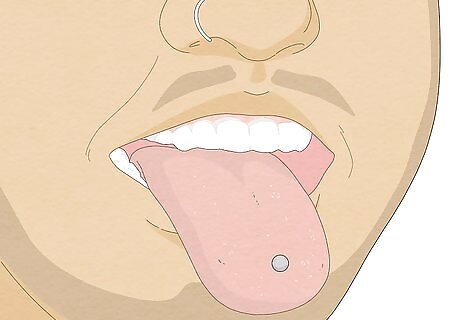
Stick out your tongue. Stick your tongue out as far as you can – this will minimize your risk of swallowing part of the piercing if you drop it. If you’re changing your piercing over the sink, close the drain first so you don’t lose any parts you drop.
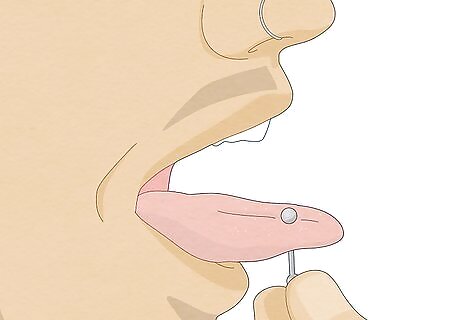
Hold one ball of the barbell. Grasp the ball on the bottom of your tongue with your non-dominant hand. Hold it steady. If you can’t get a good grip, try holding it with a piece of paper towel or clean cloth. Some barbells have balls that only unscrew on one end, and others have two balls that can unscrew. Know which one yours is before trying to change your piercing, so you know which ball to unscrew.
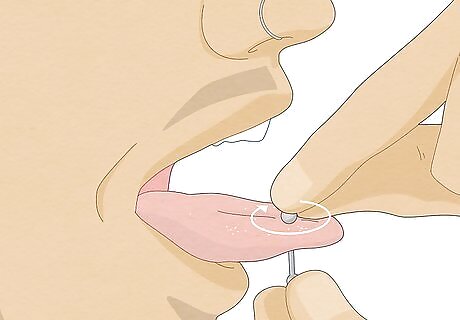
Unscrew the other ball of the barbell. Twist the top ball to the left with your dominant hand. Unscrew it completely and remove it from the barbell. Be careful not to swallow any piece of your jewelry.
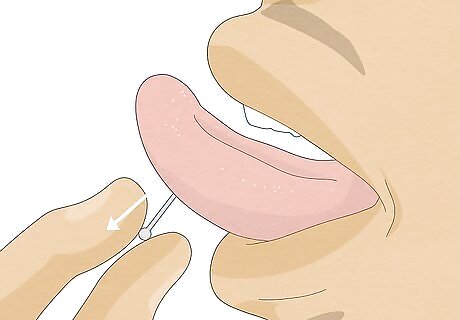
Remove the barbell. Gently slide the barbell out of your tongue, removing the entire piece of jewelry. If you’re doing this in the bathroom, be sure you don’t accidentally drop it down the sink drain.
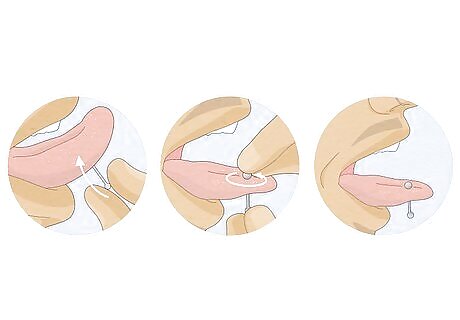
Reverse the process to put in a new piercing. Insert your new piece of jewelry through the piercing. Do this right away so your piercing doesn’t start to close up. Make sure both balls are screwed on tightly. If the piercing hole feels tight, swish some warm to hot water in your mouth; this may loosen your piercing up and make inserting the new jewelry easier.
Replacing Your Labret Stud

Clean your hands and mouth. Follow the above procedure to clean your mouth and wash your hands before handling your piercing. It’s important to keep your hands and jewelry clean even after your piercing heals.
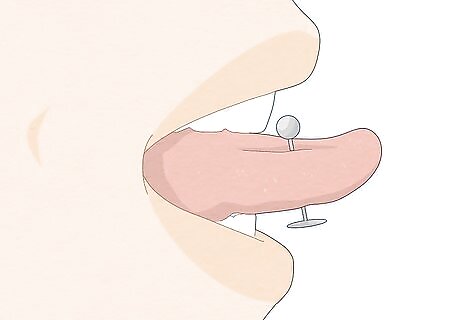
Bite down on the back of the stud firmly but slowly. Be careful not to harm your teeth! Clamp down on the back of the labret slowly. Keep this position to hold the stud in place.
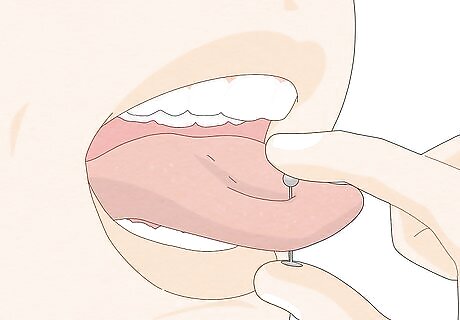
Place the base of the piercing on your thumb. Stabilize the flat, bottom part of the labret with your thumb, beneath your tongue. Carefully hold your tongue piercing atop your tongue with your index and middle finger on either side of the bar. This will hold it steady and also ensure the bar does not slip out of the tongue in the process.
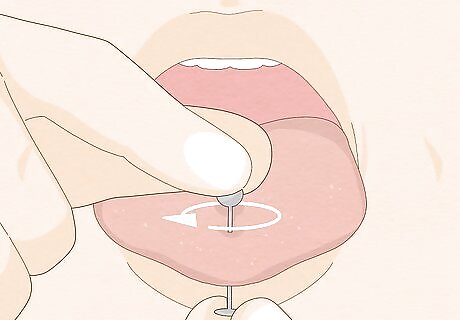
Unscrew the ball counter-clockwise. Use your other hand to unscrew the ball to the left, or clockwise.
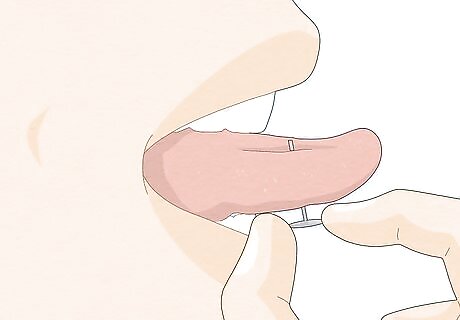
Remove the bar from your tongue. Do so without letting it drop into your mouth or out of your hands. If you are struggling, it is best to get professional help. Do not tug at your piercing; this risks damaging your tongue.
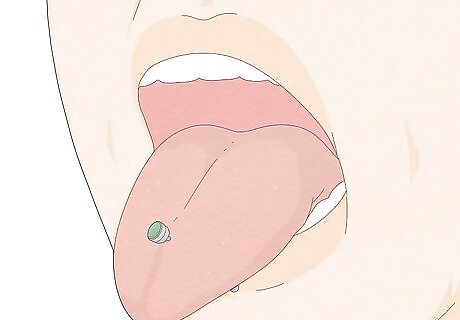
Insert your new piece of jewelry through the piercing. Do this right away so your piercing doesn’t start to close up. Make sure the ball is screwed on tightly. Consult a professional piercing artist as soon as possible if you lose part of your piercing; they can re-pierce any closed holes.
Changing Your Piercing Safely and Effectively
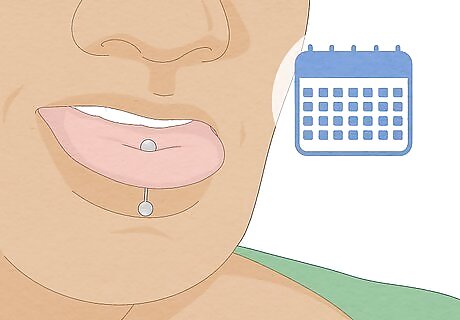
Wait 4 weeks before removing your initial piercing. Tongue piercings generally heal in about 4 weeks, though this varies from person to person. Do not try to change your jewelry before your piercing is fully healed. This can cause pain, damage, and your piercing may close up.
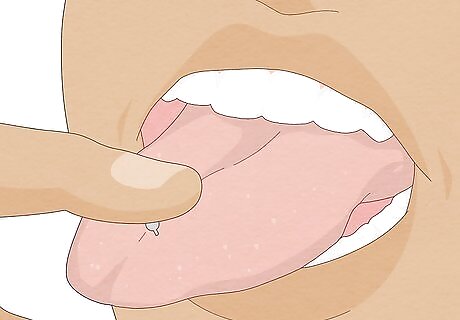
Replace your piercing in one sitting. Do not take out your piercing without replacing it. Tongue piercings can close up very quickly, even after they heal. If you take out your jewelry, put a new one in its place right away.
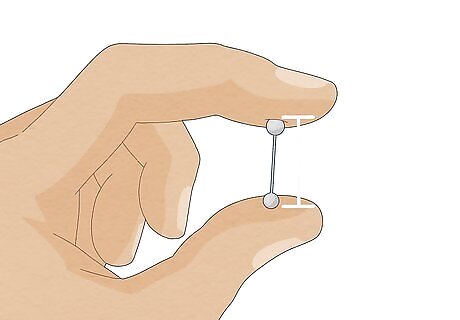
Choose a piercing that fits your tongue. Your tongue swells when you get it pierced, so the bar you were pierced with is extra long. When the swelling goes down, you can use shorter bars. Once your initial swelling goes down and your piercing is healed enough, change your barbell to a shorter one that sits more snugly on your tongue. This will probably be more comfortable and less obtrusive. It’s best to have a professional piercer help you choose the right length barbell for your tongue.

Use titanium or surgical steel jewelry. When you change your piercing, continue to use high-quality jewelry made out of titanium or surgical steel. These are sturdy and safer than cheap jewelry, which can cause an allergic reaction. Use titanium if you have had allergic reactions to jewelry – it’s the least likely to cause a reaction. 14- to 18-carat gold and other hypoallergenic products can also be a good choice for sensitive skin.
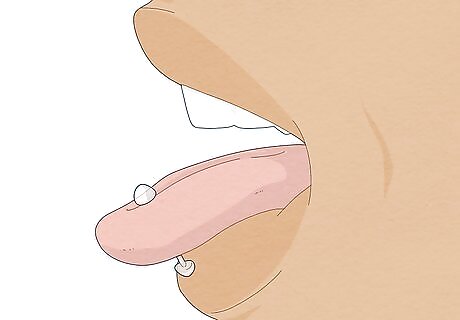
Switch to a labret or retainer only once your piercing is fully healed. It can be helpful to wear a retainer to keep your piercing open if you work in a professional environment that discourages piercings. Only use one of these once your piercing has fully healed. The same goes for switching from a barbell to a labret stud. It’s usually safe to start experimenting with jewelry after about a month. This varies from person to person, however.
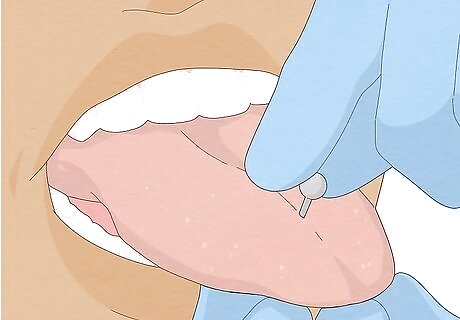
See your piercer for help changing your jewelry. If possible, return to the person who originally did your piercing; otherwise, see another trained professional. They can tell you whether or not it is a suitable time to change your piercing, and can help you choose the right length of jewelry to use. They may use pliers adapted to remove the ball from the ring; it's not recommended that you try to do this yourself.
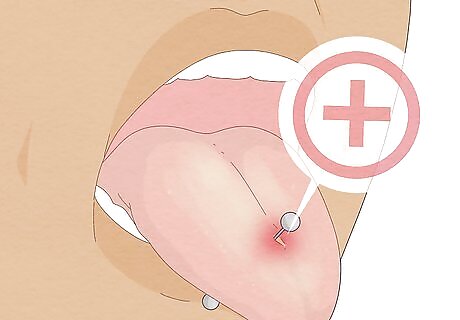
See your doctor if you have swelling, redness, or discharge. Changing your jewelry can introduce bacteria to your piercing if your hands or jewelry aren’t clean. See your doctor right away if you notice signs of infection, including: Swelling in your tongue (after the initial few days of swelling) Redness Discharge Discoloration or red streaks


















Comments
0 comment